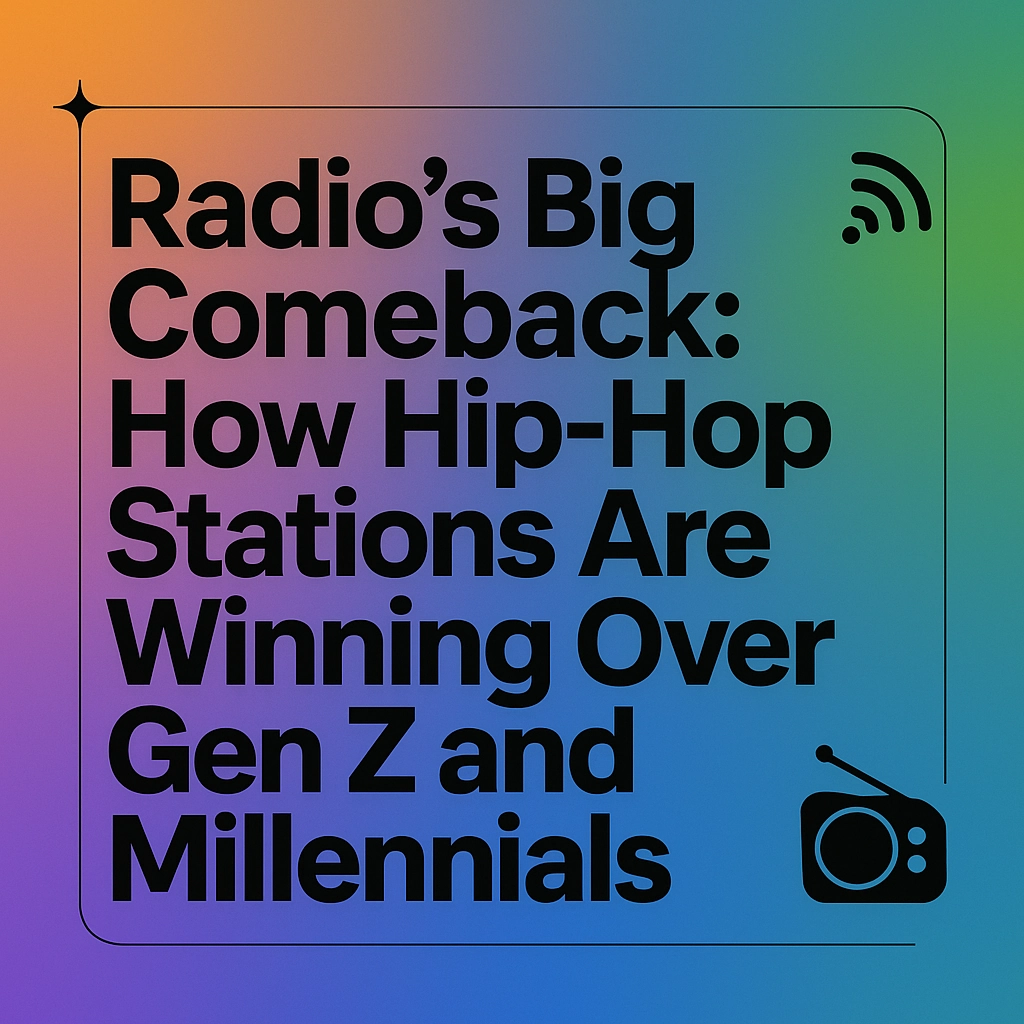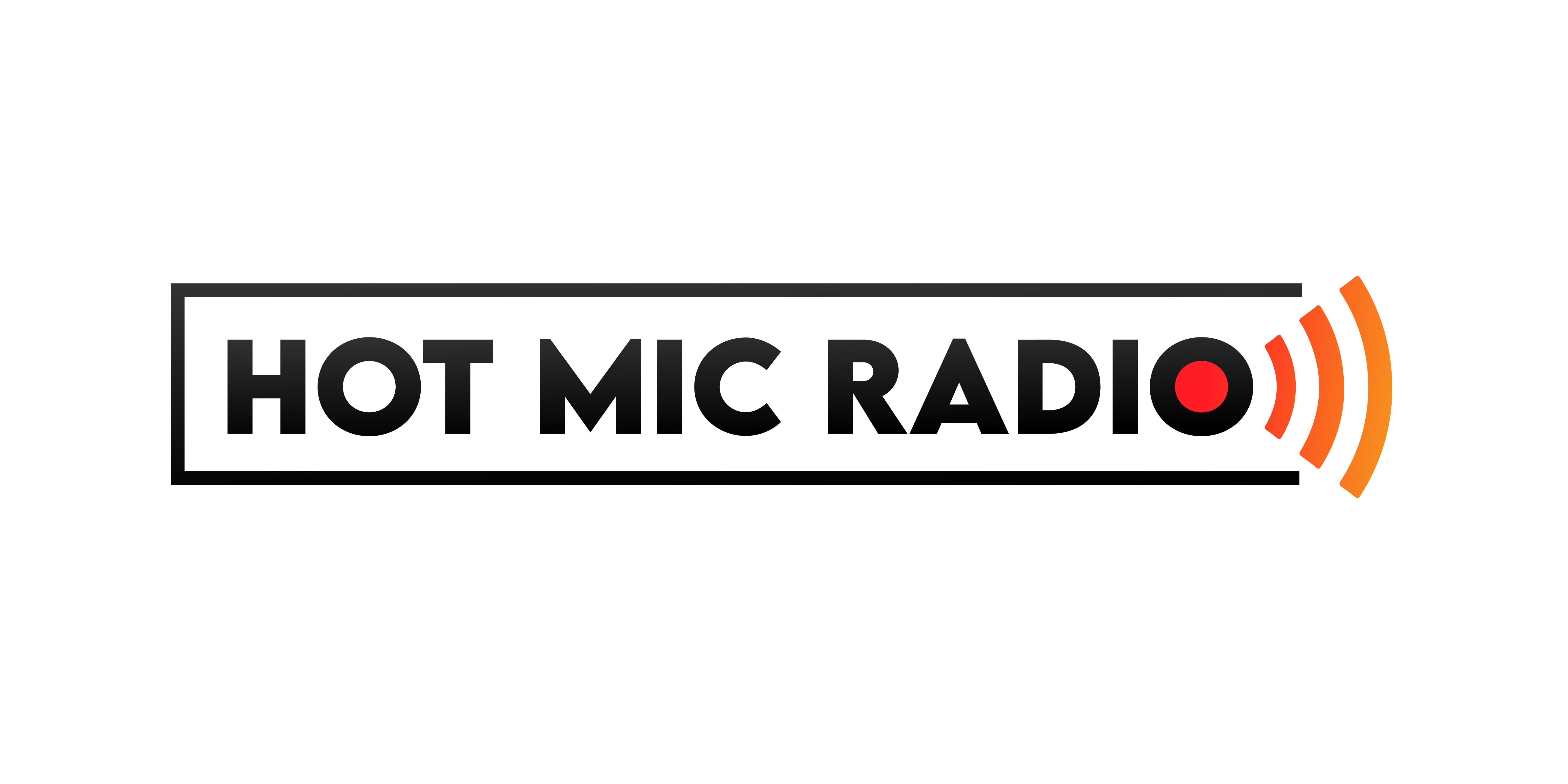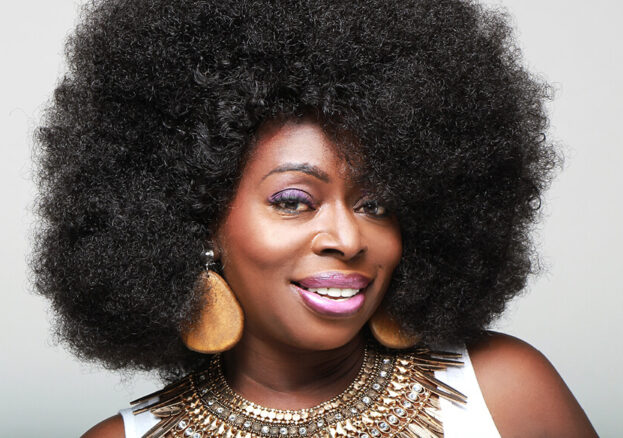-
play_arrow
Hot Mic Radio
Radio’s Big Comeback: How Hip Hop & R&B Stations Are Winning Over Gen Z and Millennials

Radio’s Big Comeback: How Hip Hop & R&B Stations Are Winning Over Gen Z and Millennials

The “Death of Radio” Was Greatly Exaggerated
Remember when everyone said radio was dying? Yeah, about that…
For years, tech prophets have been writing radio’s obituary. First it was MP3 players, then streaming services, then podcasts that were supposed to kill the radio star. But here we are in 2025, and something unexpected is happening – radio isn’t just surviving, it’s thriving. Especially in the world of Hip Hop and R&B.
The numbers don’t lie. While digital platforms continue to grow, radio still reaches over 80% of Americans weekly. What’s more surprising? Gen Z and Millennials – the digital natives who supposedly abandoned “old media” – are some of the most engaged listeners, particularly when it comes to Hip Hop and R&B formats.
At Hot Mic Radio, we’ve been watching this renaissance firsthand, and we’re breaking down exactly why the kids are falling back in love with radio.
More Than Just Music: Why Young Listeners Are Tuning In
Today’s young listeners have unlimited music choices at their fingertips. So why are they choosing radio? It boils down to something streaming algorithms can’t replicate: authentic human connection.
“I can make my own playlists, but they never have the energy of a good radio show,” says Jamal, 22, a regular Hot Mic Radio listener. “When a DJ gets excited about a new track or tells a story about meeting an artist – that’s the stuff I stay for.”

This human element creates three major advantages for Hip Hop and R&B radio:
1. Cultural Context, Not Just Content
Hip Hop and R&B are more than genres – they’re cultural movements. When a new Drake or Megan Thee Stallion track drops, it’s not just about the music. It’s about understanding its place in the culture, the beefs, the collaborations, the backstory.
Radio DJs and hosts provide that crucial context, explaining references and connecting dots between artists and movements. For genres so deeply rooted in storytelling and community, this framing matters enormously.
2. Discovery Through Trusted Voices
Streaming algorithms might know what you’ve listened to, but they don’t understand why you liked it. Radio’s human curation fills this gap, especially in Hip Hop and R&B where new artists and regional sounds constantly emerge.
“Our hosts are deeply embedded in the culture,” explains our programming director at Hot Mic Radio. “They’re at the clubs, talking to artists, and sensing shifts in the sound before they hit the mainstream. That’s something no algorithm can match.”
3. Shared Experiences in Real Time
When something major happens in Hip Hop – a surprise album drop, an unexpected beef, or a cultural moment – radio creates a shared experience. Listeners tune in not just for the music but to be part of the conversation happening in real time.
“We see massive spikes when cultural moments hit,” our analytics team reports. “When two major artists are in a lyrical battle or when a local artist breaks through, our listener numbers surge because people want to be part of that shared moment.”
The Numbers Behind the Comeback
The resurgence isn’t just anecdotal – it’s showing up in hard data. Major Hip Hop and R&B stations across the country are seeing significant ratings growth, particularly among younger demographics.
Networks like iHeartMedia, with over 860 live broadcast stations across 153 U.S. markets, ensure Hip Hop and R&B content remains widely accessible. This massive distribution network has helped sustain the genre’s presence even as media fragments.
Individual station success stories tell an even more compelling tale. Stations like “101.1 The Beat” WUBT in Nashville have seen ratings climb from 4.0 to 5.3 in Nielsen Audio PPM ratings. In Richmond, local Hip Hop and R&B stations like 99.3/105.7 KISS and 106.5 The Beat have consistently battled for the No. 1 spot in the market.

How Hip Hop & R&B Stations Are Evolving for Digital Natives
Smart stations aren’t fighting digital – they’re embracing it. Today’s successful Hip Hop and R&B stations are meeting young listeners where they live: online.
Multiplatform Experiences
The most successful stations have stopped thinking of themselves as just radio. They’re media brands that happen to include radio. At Hot Mic Radio, our strategy involves:
- Extended interviews and exclusive content on our website
- Behind-the-scenes content on social media
- Live video streams of in-studio performances
- Interactive text lines during shows
- Station-specific apps with personalized features
“We’re not just broadcasting anymore,” says our digital director. “We’re creating a community hub for Hip Hop and R&B culture that extends far beyond traditional airwaves.”
Embracing New Technologies
Voice-activated devices have been a surprising ally for radio. “Alexa, play Hot Mic Radio” is much easier than navigating through streaming apps, and smart speakers have brought radio back into homes in a big way.
Smart stations are also experimenting with interactive features that bring listeners directly into the programming:
- Live polling during shows
- Listener-submitted content
- Real-time request lines via technology
- Virtual station events
Keeping It Local When Streaming Goes Global
While streaming platforms offer global catalogs, they often miss the local element that makes Hip Hop and R&B so vital. Regional sounds – from Atlanta trap to Bay Area hyphy to Texas chopped and screwed – have always been central to Hip Hop’s evolution.
Local radio stations champion these regional sounds and artists in ways national platforms can’t. They promote local concerts, interview up-and-coming neighborhood artists, and create a direct connection to the community.
Check out our local Hip Hop shows that highlight regional talent and upcoming events in your area.
Cultural Relevance: The Secret Weapon
Perhaps the biggest advantage Hip Hop and R&B radio holds is its deep cultural relevance. These genres influence everything from fashion and language to social media trends and political movements.
“Hip Hop and R&B aren’t just what people listen to – they shape how people talk, dress, and think,” notes our cultural director. “Our stations are tapped into that larger cultural conversation.”

This cultural embeddedness creates a positive feedback loop: artists want their music on stations that understand the culture, listeners tune in for authentic cultural connection, and stations strengthen their position as cultural gatekeepers.
For Gen Z and Millennials who value authenticity above almost everything else, this cultural credibility is essential. They can spot inauthenticity instantly, which is why the most successful Hip Hop and R&B stations employ hosts who live and breathe the culture.
The Future of Hip Hop & R&B Radio
As we look toward the future, several trends suggest Hip Hop and R&B radio will continue strengthening its connection with young listeners:
1. Hyper-Specialization
Broad “Urban” formats are giving way to more specialized stations. Some focus exclusively on specific sub-genres like trap, R&B, or old-school Hip Hop. Others target specific cultural niches or regional sounds.
At Hot Mic Radio, we offer specialized streams for different tastes within the broader Hip Hop and R&B universe.
2. Creator Economy Integration
The line between radio personality and content creator is blurring. Top radio hosts now extend their brands across platforms, creating additional content on YouTube, TikTok, and podcasts while bringing that audience back to radio.
3. Community Building Beyond Music
The most forward-thinking stations recognize that their real value is in community building. They’re hosting events, creating membership programs, and building direct relationships with listeners that extend beyond broadcasting.
Why This Matters
In an era of increasing digital isolation, the comeback of Hip Hop and R&B radio represents something deeper: a desire for shared experiences, cultural context, and authentic human connection.
Young listeners aren’t turning to radio out of nostalgia. They’re discovering – or rediscovering – the unique value that curated, personality-driven, culturally-embedded audio experiences provide. In a world of infinite choice, they’re choosing human connection.
For brands and advertisers, this represents a unique opportunity to reach Gen Z and Millennials in an environment they actively choose and trust. For artists, it means radio remains a vital platform for connecting with fans in context.
And for listeners? It means the simple pleasure of letting someone who knows their stuff play you something great while telling you why it matters – a human experience no algorithm has managed to replicate.
Ready to experience the new era of Hip Hop and R&B radio? Check out Hot Mic Radio and discover why the supposed “old medium” feels fresher than ever.
Written by: HotMicRadioTeam
Similar posts
Tune in. turn it up. get discovered. © Copyright 2025 HOT MIC RADIO | Contact us at [email protected]





Post comments (0)